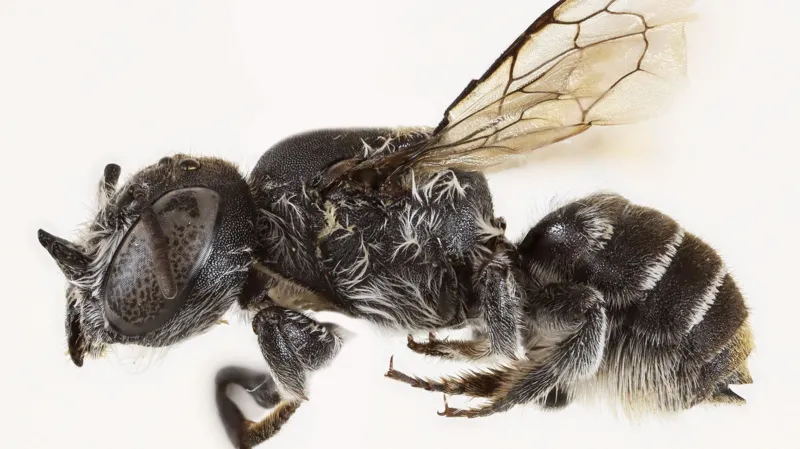Nairobi, November 11 – Australian researchers have identified a new species of native bee that features tiny horn-like structures on its head, and they have given it a name with a devilish twist.
The species, named Megachile lucifer, was discovered while scientists were studying a rare wildflower found only in the Bremer Ranges in Western Australia’s Goldfields, about 470km east of Perth.
The small horns appear only on the females. Scientists believe they could help the bees defend themselves, gather pollen or nectar, or collect materials like resin to build their nests.
Lead researcher Dr Kit Prendergast of Curtin University said she chose the name lucifer while watching the Netflix series of the same name. It is also the first new species identified in this particular bee group in two decades.
“The female had these striking little horns on her face,” Dr Prendergast explained. “I happened to be watching Lucifer at the time I was writing the species description, and the name felt like a perfect match. Plus, I’m a big fan of the character.”
The name also carries a second meaning: lucifer is Latin for “light bringer”. Dr Prendergast says this reflects the need to draw more public attention to the protection of native bees and the endangered plants they pollinate.
The findings, published in the Journal of Hymenoptera Research, call for the region where the bee and wildflower were found to receive official conservation status to prevent clearing or development.
Since both the bee and the plant are restricted to a very small habitat, the study warns they may be vulnerable to threats such as land disturbance and climate change. Dr Prendergast also noted that many environmental assessments overlook native bee species, which could result in important pollinators disappearing unnoticed.
She emphasized that without knowing which native bees exist and which plants they rely on, both could be lost before their ecological importance is fully understood.








